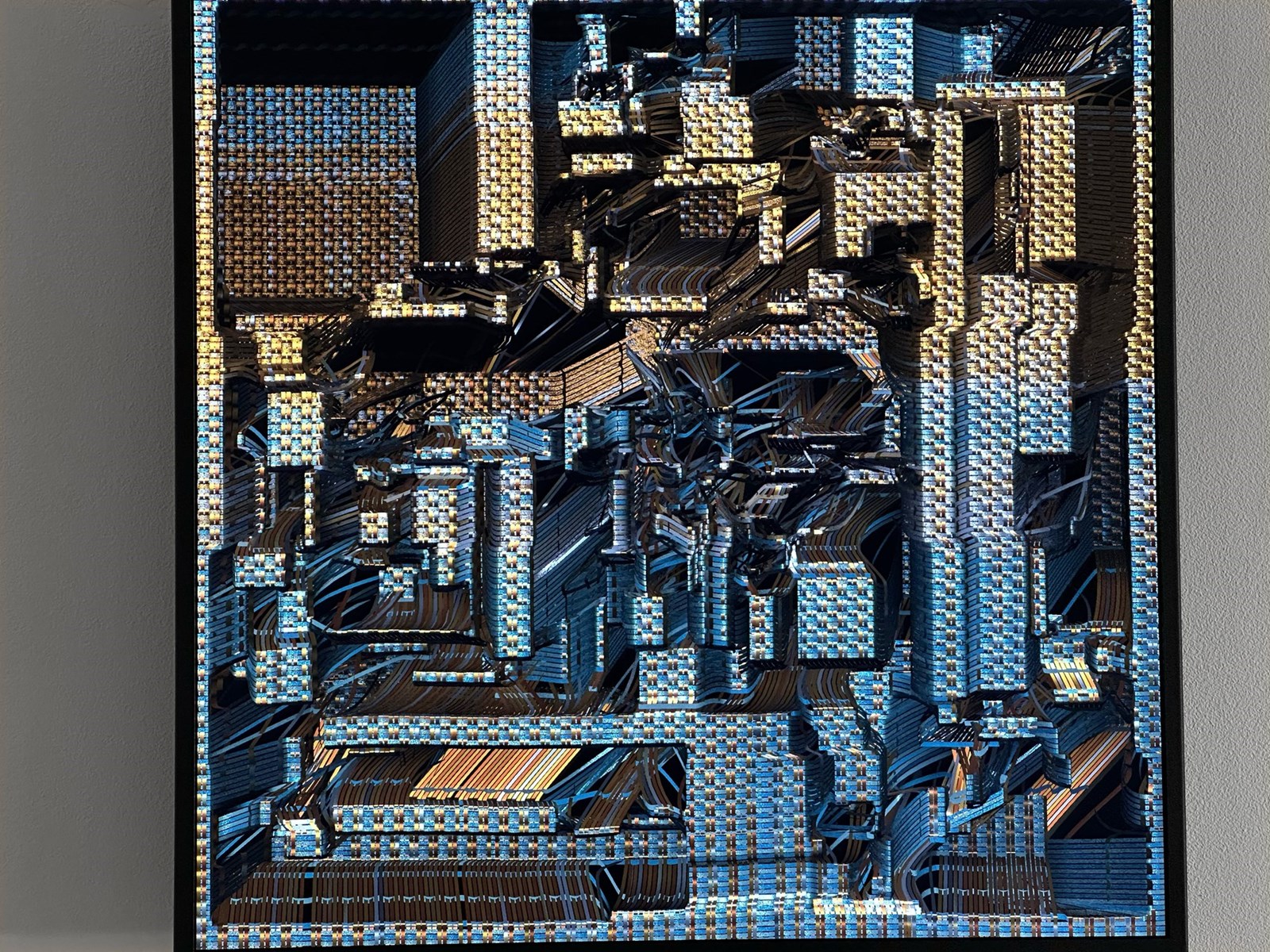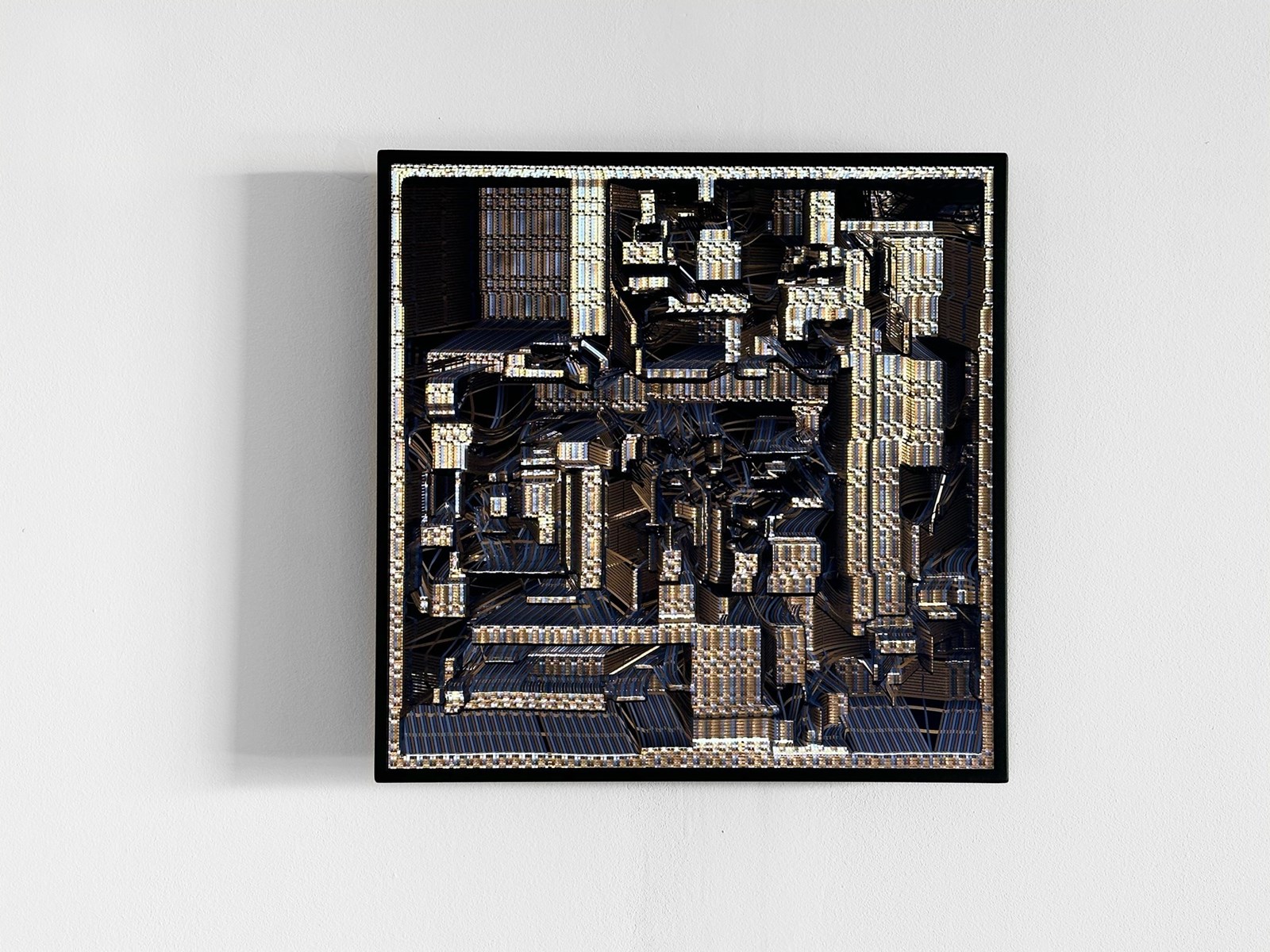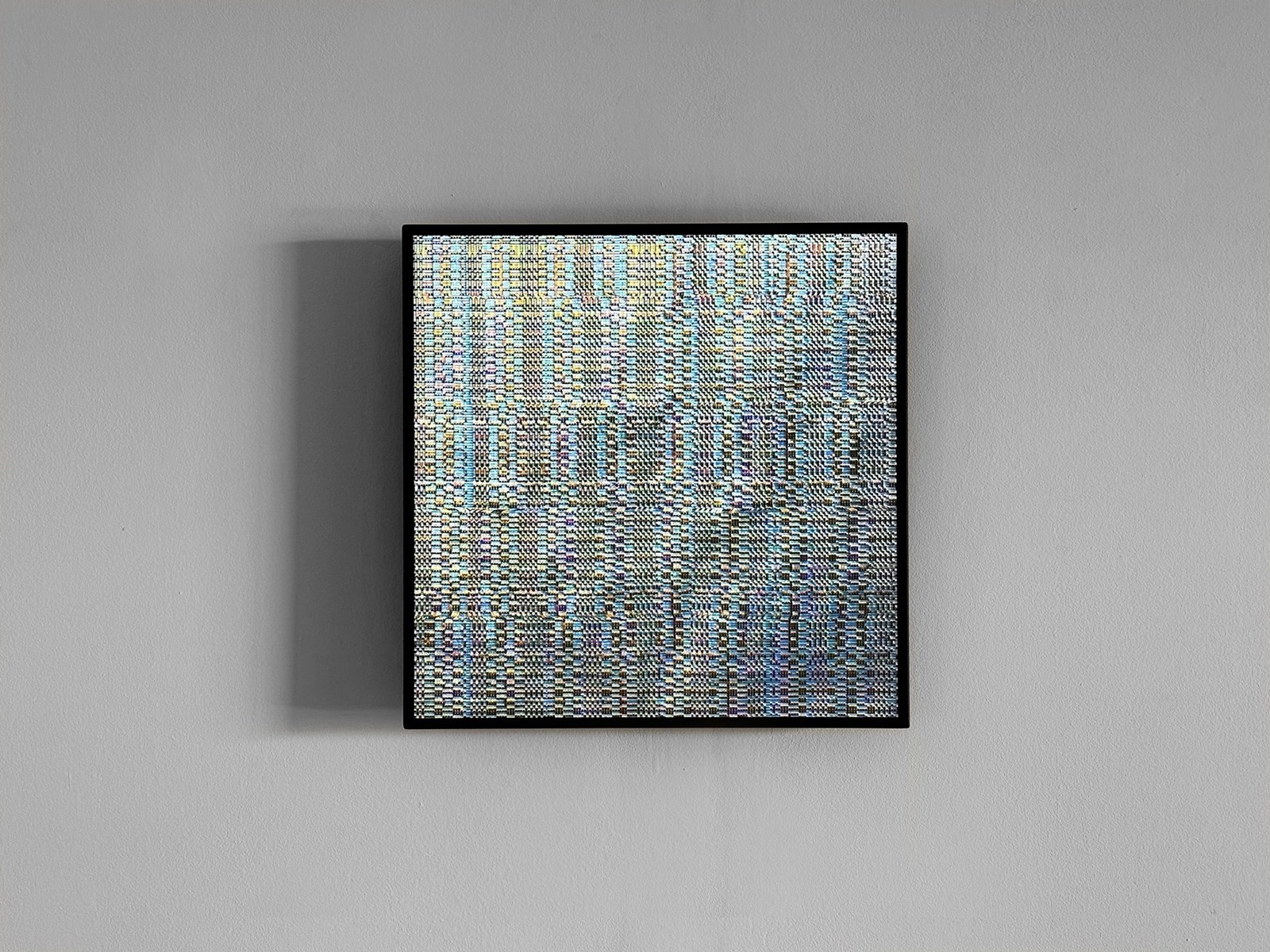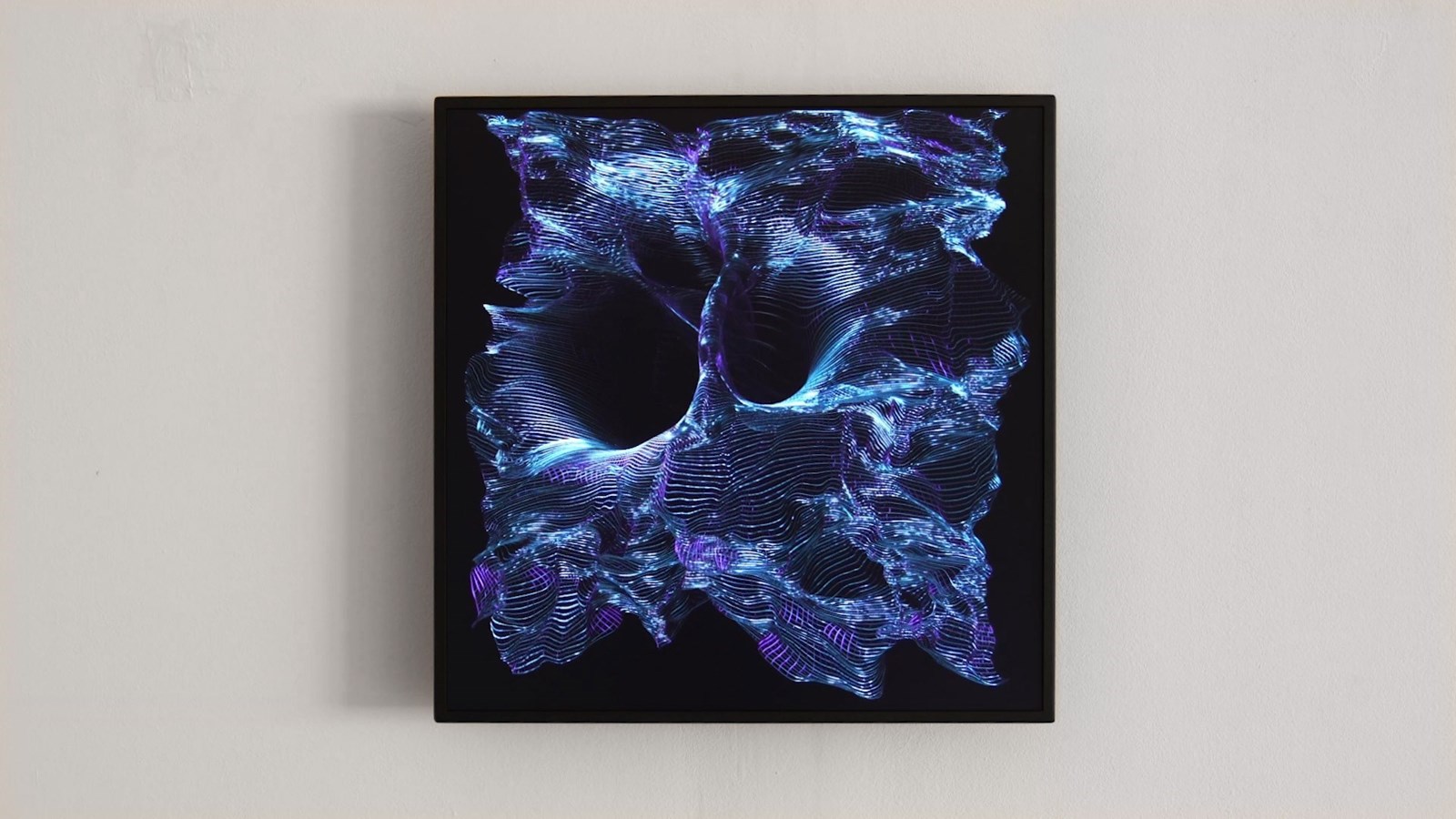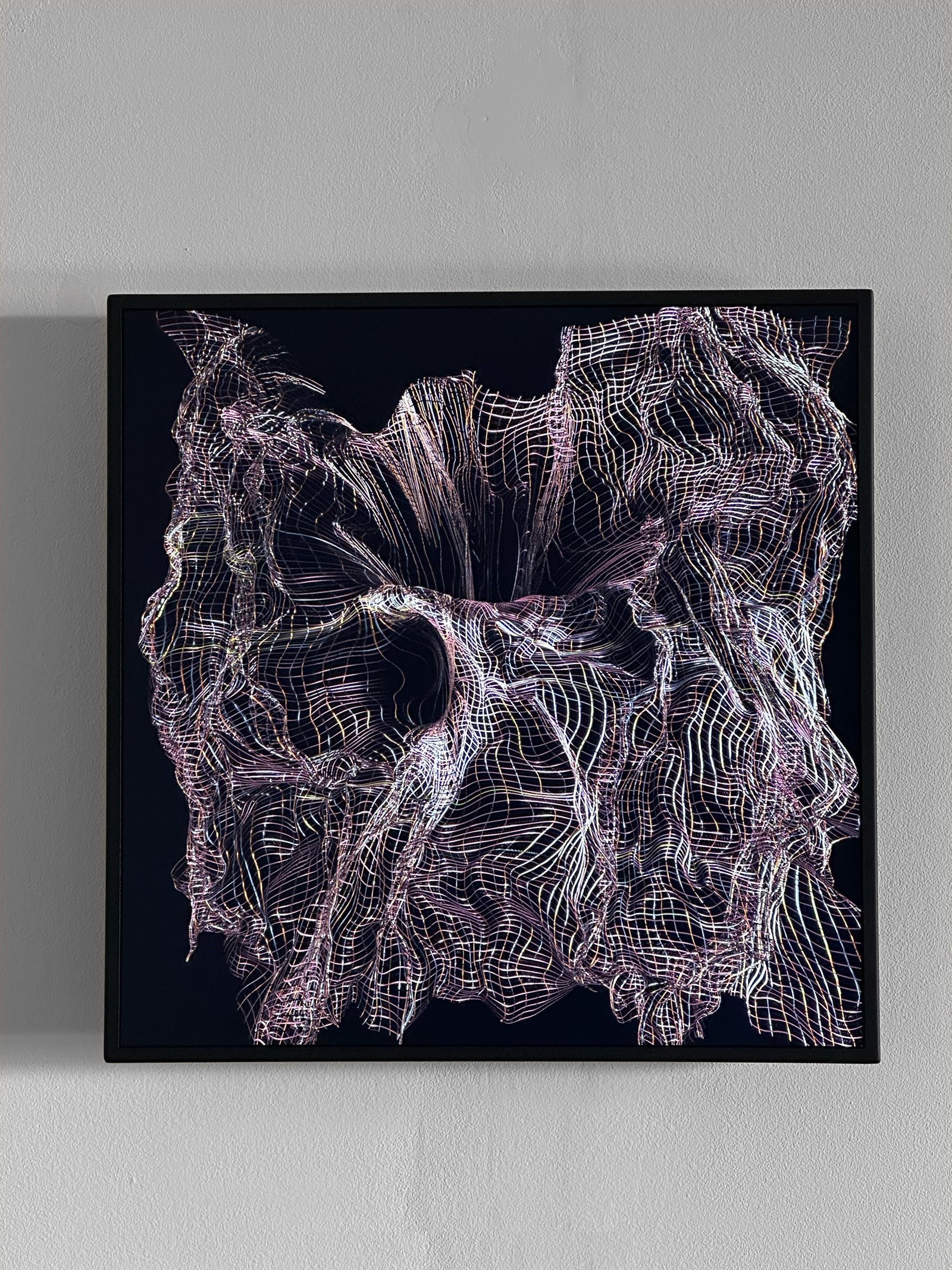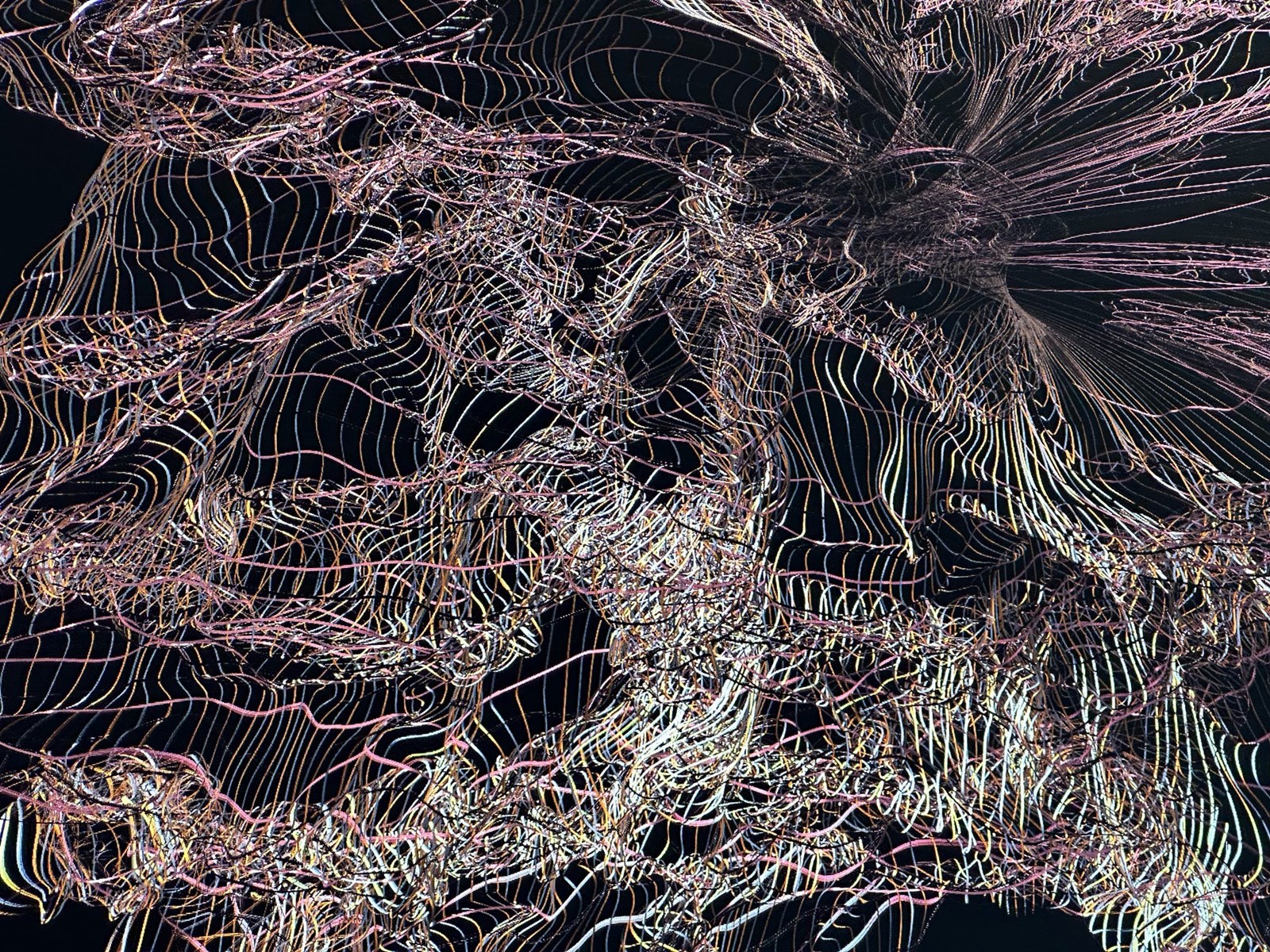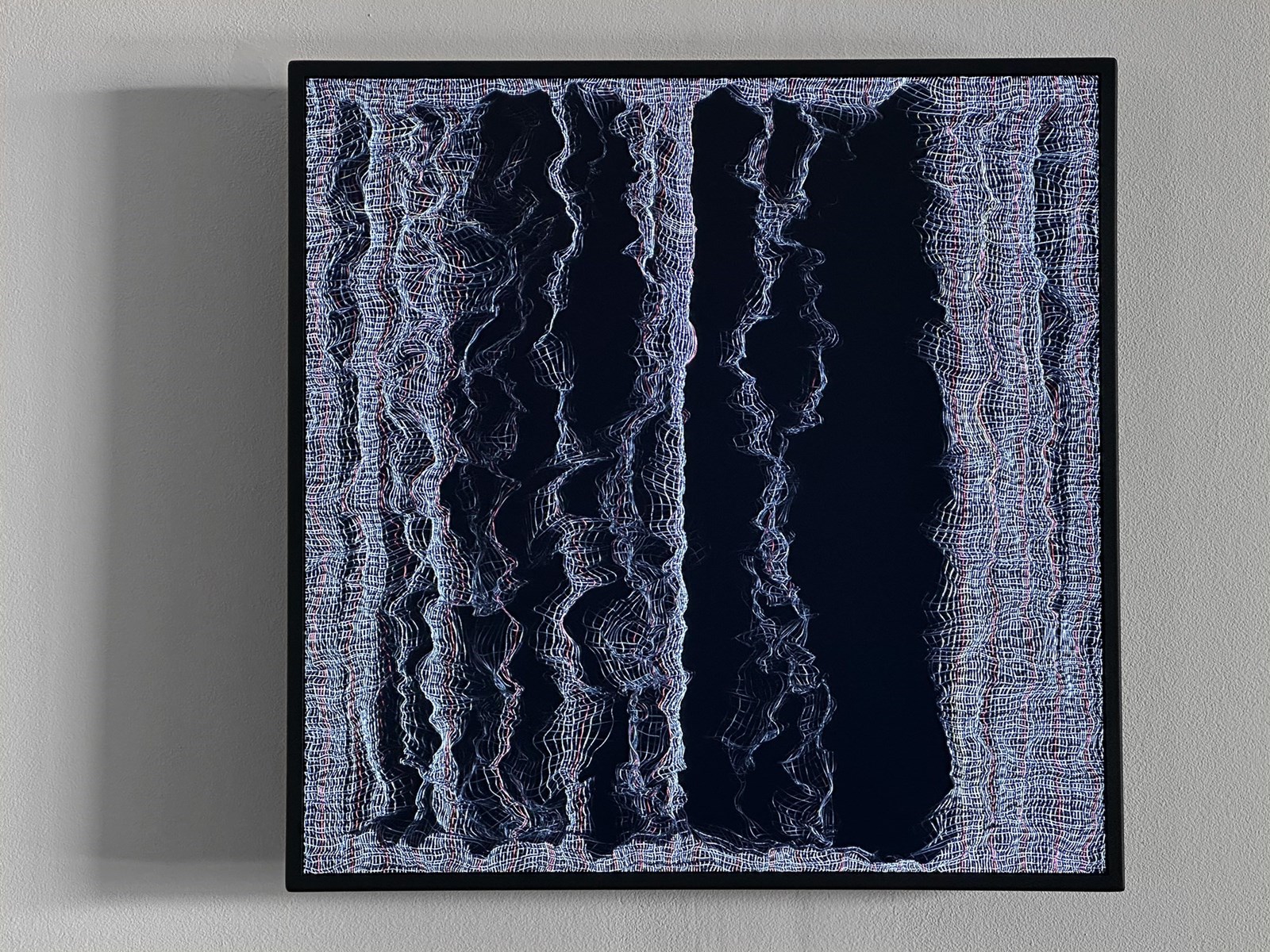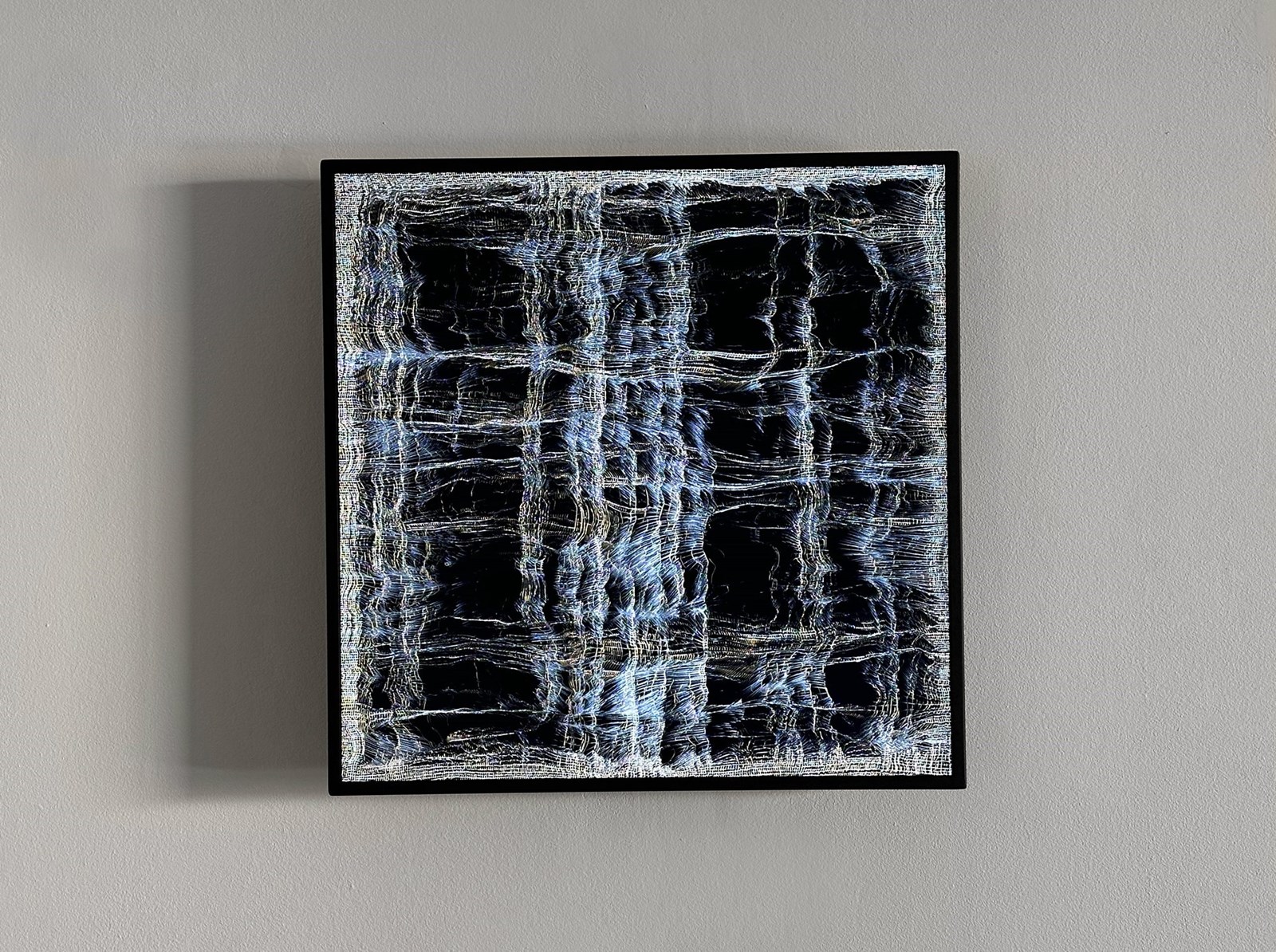The Universal Loom series concentrates on the aesthetic aspects of the digital textile, becoming an exercise of formal experimentation that reinterprets the tradition of framing heirloom lace and handkerchiefs. In recognition of artist Annie Albers’ legacy, the artwork draws inspiration from her innovative approach that blended conventional textile techniques with a forward-thinking embrace of technological advancements.
In Universal Loom I, a sequence of unraveling threads experiments freely, evoking the primordial states of a loom.
Similarly, Universal Loom II activates waves that ripple over the surface of the fabric. The work evokes Einstein’s description of the space-time continuum as a fabric that is warped by gravitational forces. Universal Loom transcends a mere formal exercise to explore the intersection of tradition and innovation, weaving together threads of history and contemporary aesthetics.
In Universal Loom III, a more structured animation resembles circuit boards and mechanical operations. This artwork’s generative animation is reminiscent of a map or an urban landscape.
Universal Loom explores the intersection of tradition and innovation, weaving together threads of history, science and contemporary aesthetics.
Universal Loom Screens, 2024
Medium: 8:9 Square screen, computer, generative custom software, internet connection.
Series of 3 artworks (Universal Loom I, II, II). Each artwork corresponds to a screen.
Medium: 8:9 Square screen, computer, generative custom software, internet connection.
Series of 3 artworks (Universal Loom I, II, II). Each artwork corresponds to a screen.
